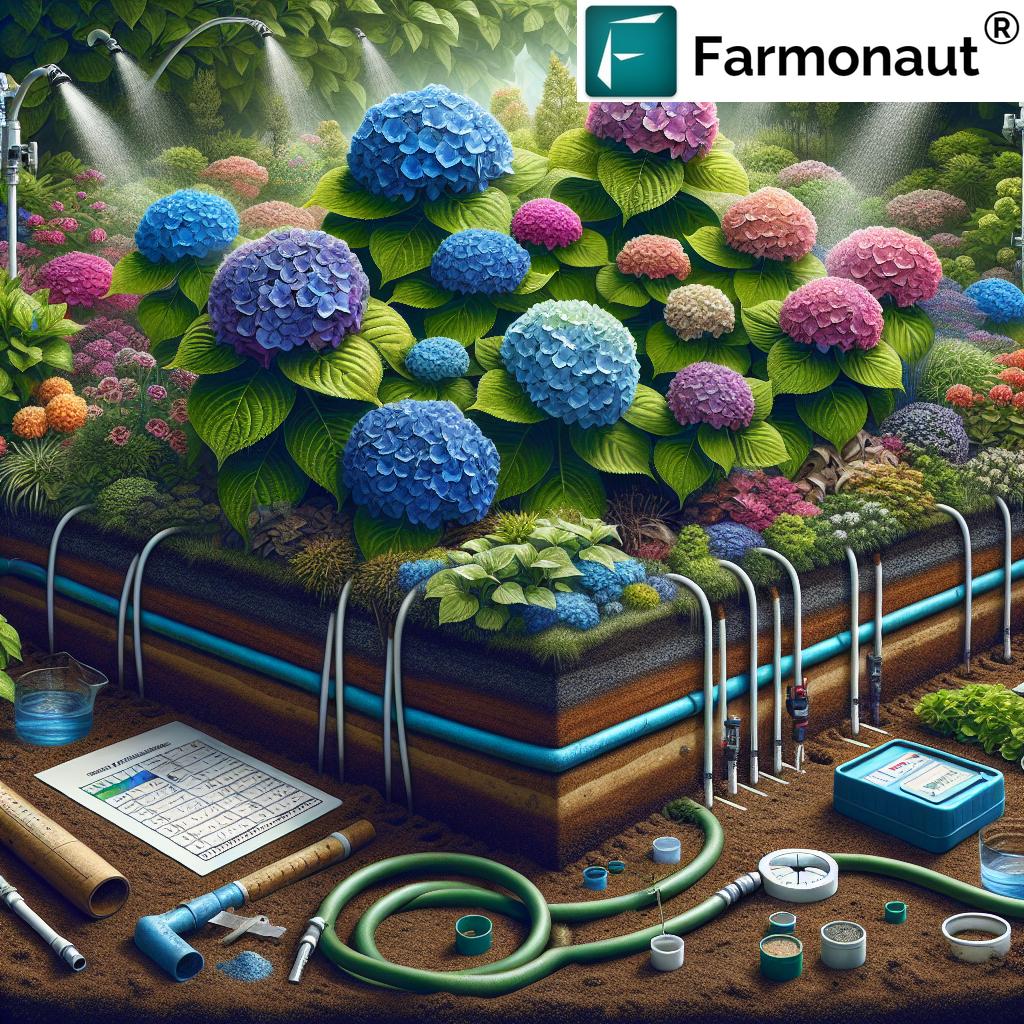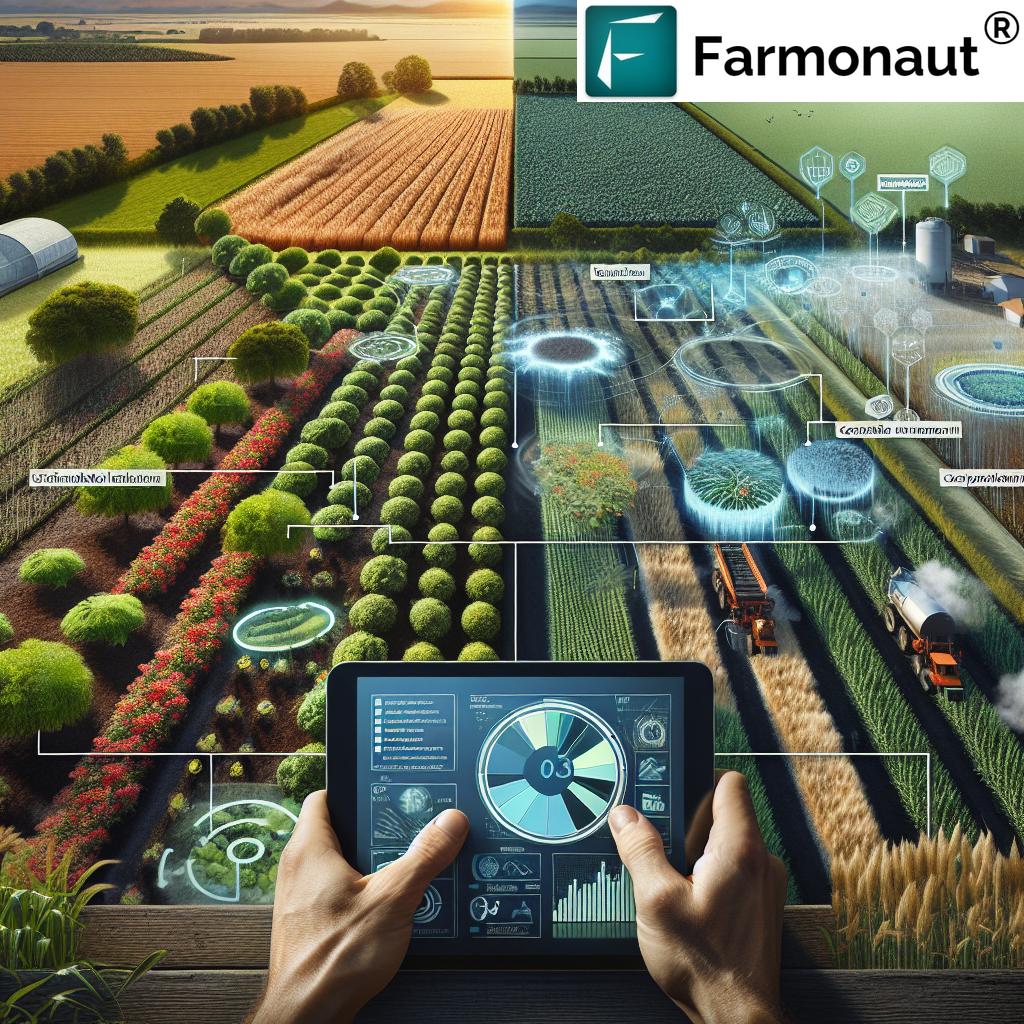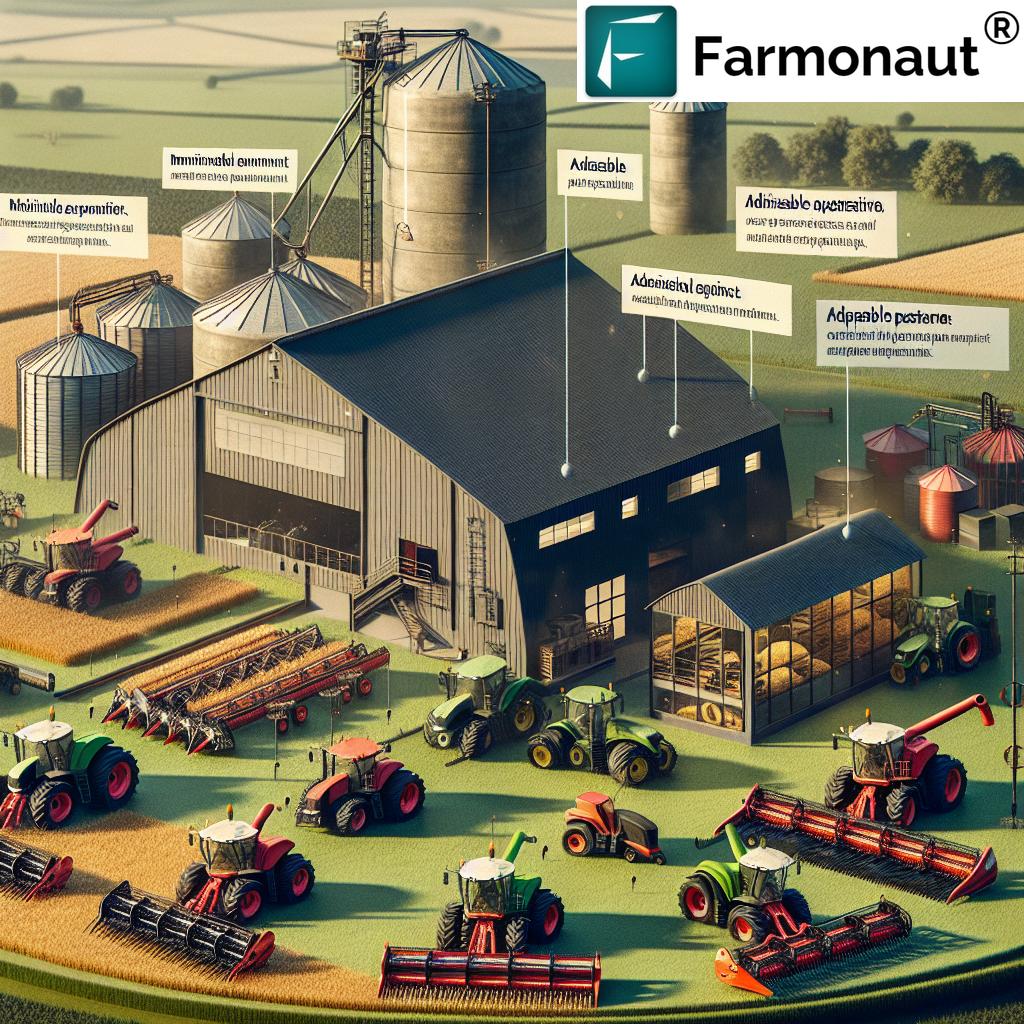Are Mealy Bugs & Black Bean Aphids Harmful to Plants? Understanding Their Impact and Management in Agriculture and Forestry (2025 Guide)
“Mealy bugs can reduce crop yields by up to 40% if left unmanaged in agricultural fields.”
Table of Contents
- Introduction: Are Mealy Bugs & Black Bean Aphids Harmful?
- The Realm of Sap-Sucking Pests in Agriculture & Forestry (2025)
- Are Mealy Bugs Harmful to Plants?
- Are Black Bean Aphids Harmful?
- Comparative Pest Impact and Management Table
- Bugs Eating My Garden Plants: What Does It Mean?
- Integrated Pest Management Strategies for 2025: Mealy Bugs, Black Bean Aphids & More
- How Farmonaut Empowers Modern Pest Management
- Farmonaut Apps, APIs & Solutions for Pest Monitoring and Sustainable Agriculture
- Conclusion: Sustaining Plant Health and Productivity
- FAQ: Mealy Bugs, Black Bean Aphids & Plant Damage
Introduction: Are Mealy Bugs & Black Bean Aphids Harmful?
In the dynamic and interconnected world of agriculture and forestry, questions like “are mealy bugs harmful to plants?” and “are black bean aphids harmful?” take on new urgency in 2025 and beyond, as environmental pressures, pest resistance, and climate variability continue to challenge farmers and foresters worldwide.
Sap-sucking insects such as the mealy bug (family Pseudococcidae) and the black bean aphid (Aphis fabae) remain at the forefront among the significant threats to crop yields, ecosystem balance, and sustainable cultivation. Understanding exactly what these bugs do, the damage they cause to plant health, and how infestations can be effectively managed is paramount for achieving long-term productivity and resilience.
This comprehensive guide investigates the harmful effects of mealy bugs, black bean aphids, and related pests in modern agriculture and forestry. With up-to-date information, integrated management strategies, and actionable solutions, this resource serves farmers, growers, and industry decision-makers aiming to overcome these challenges and secure robust plant growth in the years ahead.
The Realm of Sap-Sucking Pests in Agriculture & Forestry (2025)
Among the many challenges faced by today’s farmers and foresters, sap-sucking insects remain some of the most notorious. Mealy bugs and black bean aphids anchor this threat, but they are joined by other aphids, whiteflies, and scale insects, all of which feed off plant sap via piercing-sucking mouthparts.
These pests do not merely cause visible leaf damage; they trigger a cascade of negative effects throughout a plant’s physiology. They compromise plant vigor, reduce yields, stifle growth, and open pathways for disease, making their management a crucial component of sustainable agriculture.
Are Mealy Bugs Harmful to Plants?
Understanding Mealy Bugs: Biology and Identification
Mealy bugs are small, soft-bodied insects in the Pseudococcidae family, often just 2–6 mm in length. They’re easily identified by their white, powdery wax coating that protects their bodies. Mealy bugs reside in clusters—mainly on leaf nodes, undersides of leaves, stems, roots, and sometimes even fruit. Their piercing-sucking mouthparts enable them to mine plant sap from living plant tissues.
Key characteristics:
- Appear as clusters of small, white, cottony bugs
- Covered in a wax-like or powdery coating
- Excrete sticky honeydew that often attracts other pests and fungal growth
- Hide in crevices, leaf axils, and root crowns
How Mealy Bugs Harm Plants: Feeding, Symptoms & Effects
Are mealy bugs harmful to plants? The answer is a resounding yes. Mealy bugs cause direct and indirect damage:
- Direct Damage: Their feeding weakens plants, extracting sap and essential nutrients, leading to:
- Stunted plant growth
- Yellowing, curling, and wilting of leaves
- Poor flowering, diminished yields, and reduced fruit set
- Severe infestation can lead to plant death
- Indirect Damage: Mealy bugs excrete honeydew (a sugary substance), which promotes sooty mold fungi.
- Sooty mold development impairs photosynthesis, further reducing plant vigor and quality
- Honeydew attracts ants and may create micro-environments favoring other pests
In agricultural settings, mealy bug infestations are highly detrimental to crops like cotton, grapes, citrus fruits, and vegetables. The result is reduced marketability, compromised product appearance, and significant economic losses.
“Black bean aphids can transmit over 30 plant viruses, severely impacting crop health and productivity.”
Are Black Bean Aphids Harmful?
What are Black Bean Aphids (Aphis fabae)?
The black bean aphid—Aphis fabae—is a notorious pest in temperate zones, targeting legumes (especially beans, peas, and fava beans), as well as sugar beet, spinach, and some broadleaf ornamentals.
- Adult aphids: Small (1.5-2mm), shiny black or dark green, often forming dense colonies on new growth and under leaves
- Reproduce rapidly (parthenogenetically in many conditions), explosive infestations are common, especially in spring/summer
- Produce honeydew similar to mealy bugs, leading to sooty mold issues
How Are Black Bean Aphids Harmful to Plants?
Black bean aphids are highly detrimental due to both their feeding behavior and their capacity as virus vectors:
- Direct Damage:
- Feed by piercing plant tissues and draining sap
- Symptoms include: curled, yellowed leaves; stunted growth; diminished flowering and pod formation
- Heavy infestations often manifest as black, shiny colonies encasing shoots/leaves
- Indirect Damage:
- Transmit plant viruses (over 30 known) between host species, leading to chronic disease and ongoing loss in productivity
- Promote sooty mold fungi by excreting honeydew, which impairs photosynthesis
In legume crops, unchecked aphid infestations can devastate entire fields and drastically reduce harvests, making their identification and management a primary concern in sustainable agriculture for 2025.
Comparative Pest Impact and Management Table
Bugs Eating My Garden Plants: What Does It Mean?
Common Plant Damage: Chewing vs. Sucking Insects
If you find bugs eating my garden plants, it’s vital to distinguish between chewing insects (like beetles and caterpillars) and sucking pests like mealy bugs and aphids:
- Chewing pests cause visible holes, notches, or skeletonized leaves—look for caterpillars, beetle larvae, or grasshoppers
- Sucking pests (mealy bugs, aphids) cause:
- Yellowing, curling, distorted or sticky leaves
- Wilting, stunted growth
- Glossy, sticky residue (honeydew)
- Black patches of sooty mold
Early detection of these symptoms allows rapid application of integrated pest management (IPM) strategies, reducing the long-term impact.
Integrated Pest Management Strategies for 2025: Mealy Bugs, Black Bean Aphids & More
Why Integrated Management Matters in Agriculture & Forestry
As pest pressures intensify—due to climate change, monoculture expansion, and resistance—integrated pest management (IPM) offers farmers and foresters a sustainable, practical road map in 2025 for both agricultural and forestry systems. The goal is sustaining productivity without sacrificing the surrounding ecosystem balance.
Key Pillars of IPM for Mealy Bugs & Black Bean Aphids
-
Monitoring & Early Detection
- Use of sticky traps and visual scouting in fields, gardens, and nurseries
- Regularly inspect the undersides of leaves and growing tips
- Satellite-based crop monitoring platforms, like those provided by Farmonaut, can aid in early detection by identifying crop stress and unusual patterns in vegetation health
-
Biological Controls
- Enhance populations of natural enemies: ladybird beetles, lacewings, hoverflies, parasitic wasps
- Maintain field margins, plant hedgerows, or introduce companion plants to support beneficial insects
-
Cultural Practices
- Utilize crop rotation to interrupt pest cycles
- Remove heavily infested or dead vegetation to deny pests a habitat
- Optimize irrigation and soil health to support plant vigor and stress tolerance
- Involve practices like appropriate planting time or use of resistant varieties
-
Chemical Controls
- Only when necessary—employ targeted insecticides that spare beneficial insects
- Choose modern, low-impact pesticides with minimal environmental effect and reduced resistance risk, aligning with 2025 best practices
-
Use of Resistant Varieties
- Adopt bean and broadleaf varieties bred for resistance to aphid or mealy bug feeding
Emerging Trends in Pest Management for 2025 & Beyond
- AI-driven pest forecasting: Digital and remote monitoring tools now use AI to predict outbreak likelihood based on weather, plant stress, and pest history.
- Real-time crop stress mapping: Satellite-based vegetation indices (like NDVI via Farmonaut’s large scale farm management tools) quickly identify early hotspots for infestation mitigation.
- Blockchain for traceability: Ensuring crop lots are protected from pest or disease carry-over through product traceability solutions from Farmonaut.
- Environmental impact monitoring: Quantifying pest management’s carbon footprint with carbon footprint monitoring tools for sustainable operations.
Expert Tips for Managing Plant-Damaging Bugs
- Regularly scout fields and gardens, especially during warm, humid spells when bug populations explode
- Encourage a balanced agro-ecosystem with biodiversity to keep pest outbreaks in check naturally
- Integrate digital monitoring apps or satellite-driven platforms for remote, data-backed field decision making (Farmonaut App)
How Farmonaut Empowers Modern Pest Management
As a pioneering satellite technology company, Farmonaut offers cost-effective satellite solutions specifically tailored for farmers, agri-businesses, and governments. While we do not sell crop protection products or inputs, our innovation in real-time monitoring empowers users to detect potential infestations early and make data-driven decisions to ensure plant health and productivity in 2025.
- Real-Time Satellite-Based Crop Monitoring: Our app and web tools analyze satellite NDVI and other indices, flagging unusual patterns that may indicate pest infestations such as mealy bugs or aphids.
- AI-Based Advisory: Jeevn AI offers custom insights on pest outbreak risk, optimal irrigation, or critical times for monitoring.
- Traceability & Compliance: Our blockchain-powered traceability solutions help confirm sources and pest-free status for crops in the supply chain.
- Environmental Impact Tracking: Businesses can leverage carbon footprinting tools to optimize pest control choices while maintaining climate-conscious operations.
- Resource & Fleet Management: Our GPS-based tracking platform (fleet management) ensures timely intervention during pest outbreaks across large farm holdings.
Farmonaut Apps, APIs & Solutions for Pest Monitoring and Sustainable Agriculture
Accessible Platforms for All Users
We make satellite-driven insights accessible via web, Android, and iOS apps for individual farmers, agronomists, and businesses.
- Farmonaut Web & Mobile Apps – Instantly monitor crop health, forest plantations, or reforestation sites for pest stress.
- Farmonaut API – Seamlessly integrate satellite monitoring and pest risk analysis into your proprietary agricultural platforms for scale.
- Fleet Management – Optimize and direct pest control operations for teams and vehicles in real time across farm or project sites.
- Crop Loan & Insurance Verification – Validate pest-free fields and speed up insurance or loan processes using satellite-based evidencing.
- Large Scale Farm Management – Comprehensive monitoring, data visualization, and digital record-keeping for commercial farms.
- Crop, Plantation & Forest Advisory – Utilize remote sensing to plan pest-resistant forest planting projects or nursery stock establishment efficiently.
- API Developer Documentation – For advanced integrations and custom agricultural analytics.
By combining satellite imagery, artificial intelligence, and blockchain, we empower our users to make informed decisions while sustaining ecosystem balance.
Conclusion: Sustaining Plant Health and Productivity
The challenge of pest management in 2025 hinges on a clear understanding of bugs like mealy bugs and black bean aphids. Both are harmful to plants, directly affecting plant health, reducing growth and yields in agricultural and forestry settings, and compromising sustainable cultivation.
Approaching these significant threats with an integrated strategy—combining cultural, biological, and chemical controls with cutting-edge digital and satellite-based monitoring—allows farmers and foresters to protect their productivity and the vital ecosystem balance necessary for long-term success. Understanding the impact of these pests, detecting infestations early, and continuously deploying the latest management strategies ensures not only today’s harvest, but the resilience of our agricultural and forestry systems for the years ahead.
FAQ: Mealy Bugs, Black Bean Aphids & Plant Damage
-
Q: Are mealy bugs harmful to plants in 2025?
A: Yes, mealy bugs are highly harmful to plants—causing yellowing, stunted growth, and up to 40% crop yield loss if unmanaged. They weaken plants by feeding on sap and promoting sooty mold through honeydew excretion. -
Q: Are black bean aphids harmful?
A: Absolutely. Black bean aphids (Aphis fabae) drain plant sap, cause leaf distortion and stunted growth, and can spread over 30 plant viruses—substantially harming crop health and productivity. -
Q: How do I know if bugs are eating my garden plants?
A: Look for visible damage—holes in leaves (chewing insects), or sticky/curled/yellowed leaves (sucking pests like mealy bugs or aphids). Early detection is critical for effective control. -
Q: What’s the best way to manage sap-sucking pests in agriculture and forestry?
A: Integrated pest management—combining regular monitoring, encouraging natural predators, deploying resistant varieties, and careful use of targeted, modern insecticides. -
Q: Can satellite technology help with pest management?
A: Yes. Satellite-driven platforms such as Farmonaut deliver real-time monitoring, identifying potential pest outbreaks and supporting both large-scale and individual farms in making efficient, evidence-based decisions. -
Q: How important is early detection of infestations?
A: Essential. Early detection prevents rapid population growth and secondary effects like viral disease or major yield loss, allowing for targeted, cost-effective interventions.
For advanced, accessible crop monitoring and pest management insights, try the Farmonaut App or visit our API page for integration options.
Together, we can secure plant health and productivity through smarter technology and sustainable management in 2025 and beyond.










